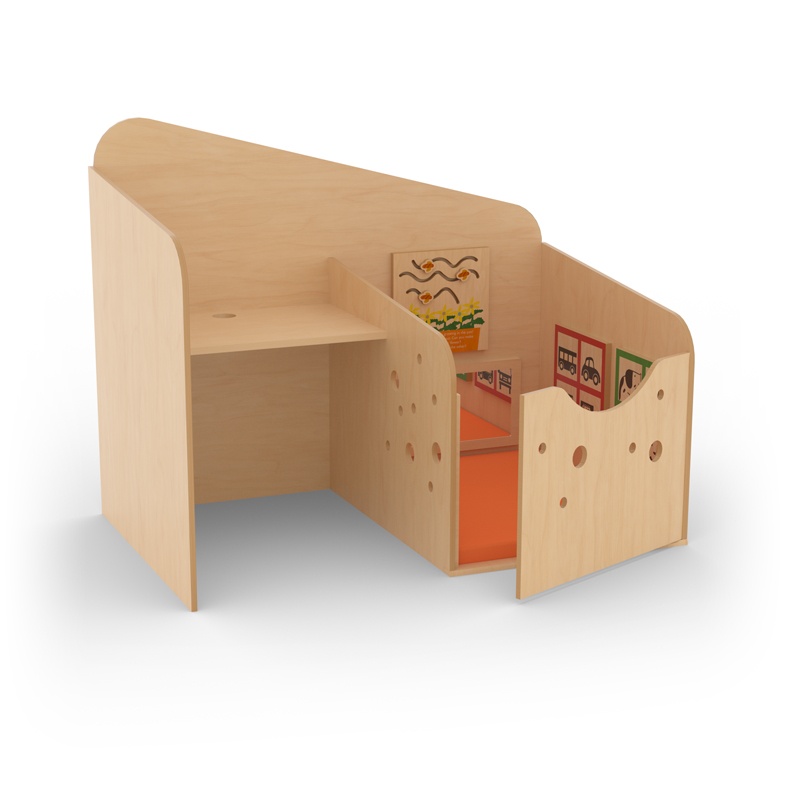OK, coworking is something I take seriously—I’ve been writing about them for quite a while now [2].
As I have said from the beginning, you can do coworking anywhere.
So I wasn’t surprised to see the announcement that a coworking company plans to open a work space on Mars [1]. 🙂
Huh. I mean, this is obviously just a stunt. It’s easy enough to imagine a coworking space on Mars, it’s quite another to actually create one. (Not that I expect a Mars colony any time soon.)
But let’s do imagine it. What would it take to make this real?
One thing I noticed immediately is that the headline claims that they “bought an acre” on Mars. Excuse me? Who did you buy it from, and who says they own it to sell? (We know the answers are probably, “Elon” and “Elon”.)
But this leads to questions like, what kind of rental contract would the work space use? What currency was this contract denoted in? How will the contracts be enforced? (The probably answers are “some kind of blockchain thing”, “some kind of cryptocurrency”, and “Elon”.)
Leaving these mechanics aside, the more important question is, what is the business model here?
Assuming that there are actual colonists on Mars, live colonists, how many of them will need a coworking space? What will they want to do in a coworking space?
It’s hard to know exactly what the economy of this colony might be, or what kinds of work people will do there. Specifically, how many office workers will there be, and how many will need or want to rent office spaces? I.e., how many potential customers will there be, and what will they need and want?
For the moment, let’s assume that there will be at least some office workers, and they will need desks and internet (maybe they live in a pod with nothing but a bed). And let’s assume we’re building a workspace similar to coworking spaces on Earth. Let’s look at costs and opportunities.
How much will it cost to fabricate the building with a livable environment and furnishings? I don’t know. Presumably, the colony will have technologies and skills to do this, though I don’t know what they plan WRT the construction business. But it’s not cheap to build something like this on Earth, so it’ll be pricey on Mars, too.
Which means that rents could be pretty steep for everything, including work space.
What will workers get besides a desk and network infrastructure? Well, it’s highly unlikely there will be coffee service or other glitzy amenities. There may be erzatz “coffee” on Mars, and “snacks”, but luxuries imported from Earth will be very expensive.
Workers are going to need to be pulling in a lot of income to afford to live on Mars, let alone rent a coworking desk. What kind of work will there be on Mars? How much will it pay?
I have no clue what the economy of this colony may be. There will be people building running the infrastructure. There may be prospecting and mining operations. Will the colony be inhabited by retired billionaires and their serving staff?
The question is, what kind of digital and office work will there be? And how many workers who need a “remote workspace”? Hard to guess.
Now, there is one kind of “remote work” that might be done on Mars—work for consumption on Earth. A lot of stuff that gig workers do on the Internet might be done while living on Mars. If nothing else, “Made on Mars” sounds cool, even if it’s the same result as you could get from some guy living in Boise or Burbank or Bangkok.
There are obvious challenges to remote working from Mars, starting with latency and bandwidth (round trip for email could be half a day). What kind of work could you do better or cheaper on Mars than on Earth? Honestly, I would suspect that Mars will outsource a lot of work to the vast low paid hordes of the auld home planet, rather than successfully competing with us.
Now, one possible economic model for a Mars colony would be to try to be a really, really “off shore” haven. Unregulated finance, stolen data, grey and black markets of various kinds. Basically, Earth authorities have no sway, so Mars could be a pirate’s dream.
A shell company on Seychelles? Hell, why not “Incorporated on Mars”!
And these Buccaneers on Mars will want desk space, yes sir!
It’s an interesting idea, though if you want to run a dark net on Mars, you probably want people on Earth to be able to use it. And that ain’t going to be easy, and it ain’t going to be easy to hide. It seems like it would need an Earth-side component that would be very expensive (transmitting packets to and from Mars) and also pretty vulnerable to interdiction.
So there’s a lot to be worked out, and a lot of unknowns.
Obviously, I grok that this announcement from BeeRemote is just intended to grab attention, to sell services hear and now. Whatever deal they did with Elon is obviously BS, and gave Elon an opportunity to plug his imaginary colony, which is coming Real Soon Now.
But, let’s give kudos to BeeRemote for getting us think seriously about what “this”coworking on Mars” would really mean. This is much more entertaining that most rental office promotions.
- BeeRemote, BeeRemote Buys Acre on Mars for Out-of-This-World Co-Working Space, in 24-7 Press Release Wire, February 21, 2023. https://www.24-7pressrelease.com/press-release/498577/beeremote-buys-acre-on-mars-for-out-of-this-world-co-working-space
- Robert E. McGrath, What is Coworking? A look at the multifaceted places where the gig economy happens and workers are happy to find community, Urbana, Robert E. McGrath, 2018.
What is Coworking? What Will Coworking Become?


